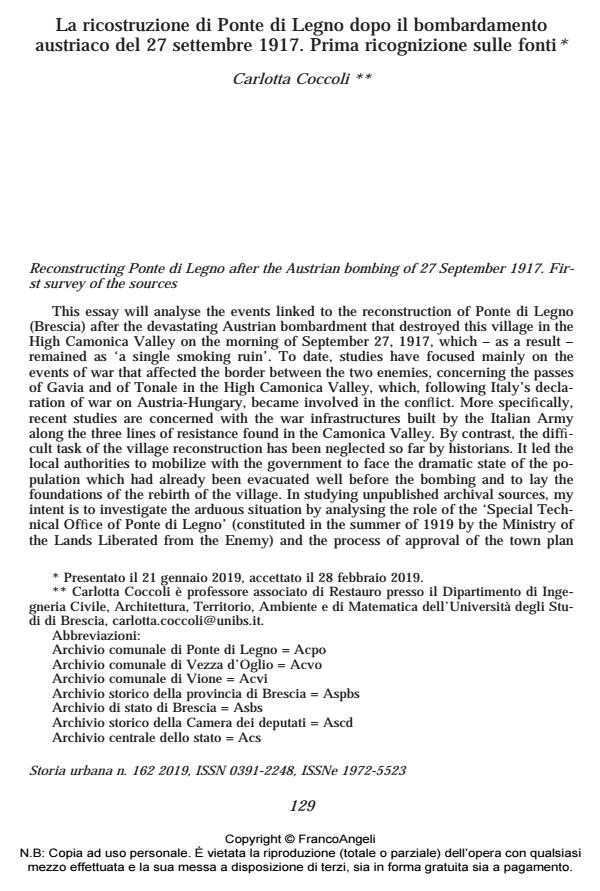Reconstructing Ponte di Legno after the Austrian bombing of 27 September 1917. First survey of the sources
Journal title STORIA URBANA
Author/s Carlotta Coccoli
Publishing Year 2019 Issue 2019/162
Language Italian Pages 25 P. 129-153 File size 356 KB
DOI 10.3280/SU2019-162007
DOI is like a bar code for intellectual property: to have more infomation
click here
Below, you can see the article first page
If you want to buy this article in PDF format, you can do it, following the instructions to buy download credits

FrancoAngeli is member of Publishers International Linking Association, Inc (PILA), a not-for-profit association which run the CrossRef service enabling links to and from online scholarly content.
This essay will analyse the events linked to the reconstruction of Ponte di Legno (Brescia) after the devastating Austrian bombardment that destroyed this village in the High Camonica Valley on the morning of September 27, 1917, which - as a result - remained as ‘a single smoking ruin’. To date, studies have focused mainly on the events of war that affected the border between the two enemies, concerning the passes of Gavia and of Tonale in the High Camonica Valley, which, following Italy’s declaration of war on Austria-Hungary, became involved in the conflict. More specifically, recent studies are concerned with the war infrastructures built by the Italian Army along the three lines of resistance found in the Camonica Valley. By contrast, the difficult task of the village reconstruction has been neglected so far by historians. It led the local authorities to mobilize with the government to face the dramatic state of the population which had already been evacuated well before the bombing and to lay the foundations of the rebirth of the village. In studying unpublished archival sources, my intent is to investigate the arduous situation by analysing the role of the ‘Special Technical Office of Ponte di Legno’ (constituted in the summer of 1919 by the Ministry of the Lands Liberated from the Enemy) and the process of approval of the town plan drawn up by the engineer Giuliano Massarani from Brescia (March 1920). As a result, the reconstructed village was inaugurated in April 1921.
Keywords: Ponte di Legno, First World War, war damages, town planning, post-war reconstruction, Riccardo Moscatelli, Giuliano Massarani.
Carlotta Coccoli, La ricostruzione di Ponte di Legno dopo il bombardamento austriaco del 27 settembre 1917. Prima ricognizione sulle fonti in "STORIA URBANA " 162/2019, pp 129-153, DOI: 10.3280/SU2019-162007